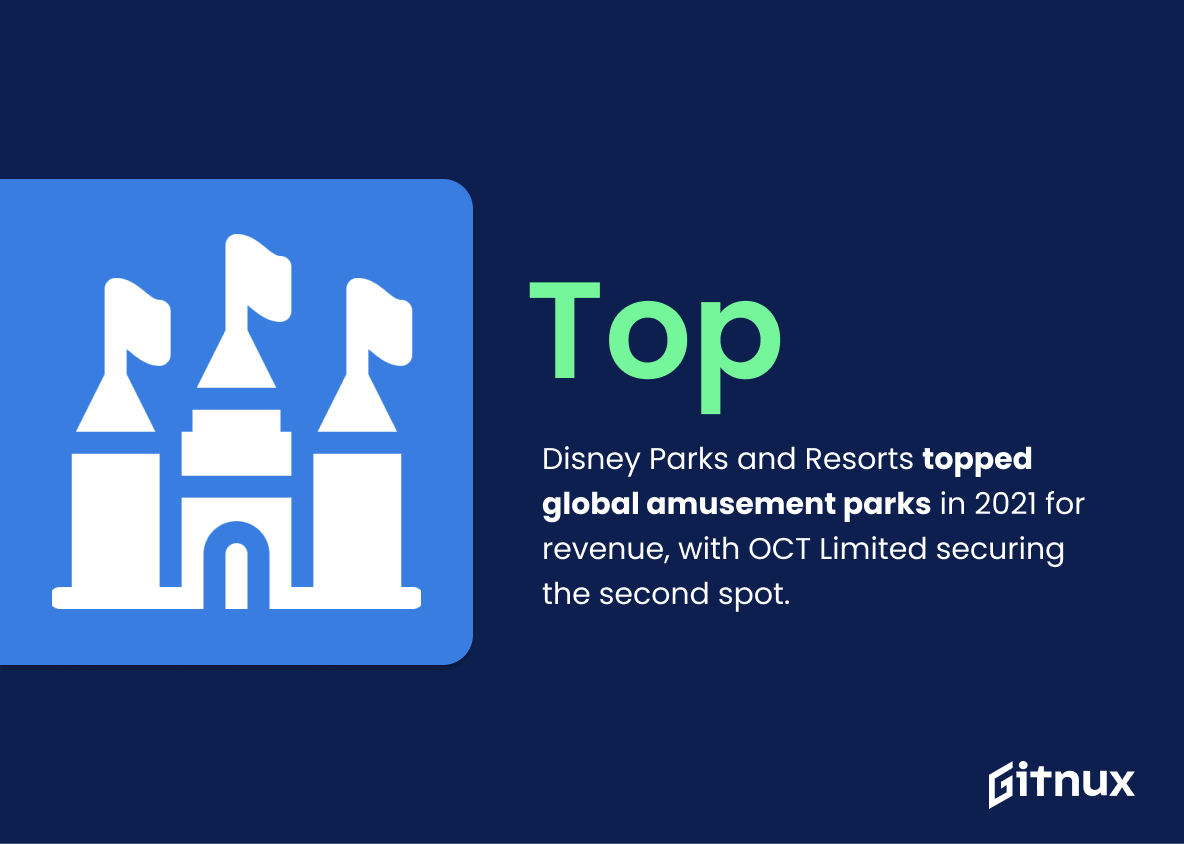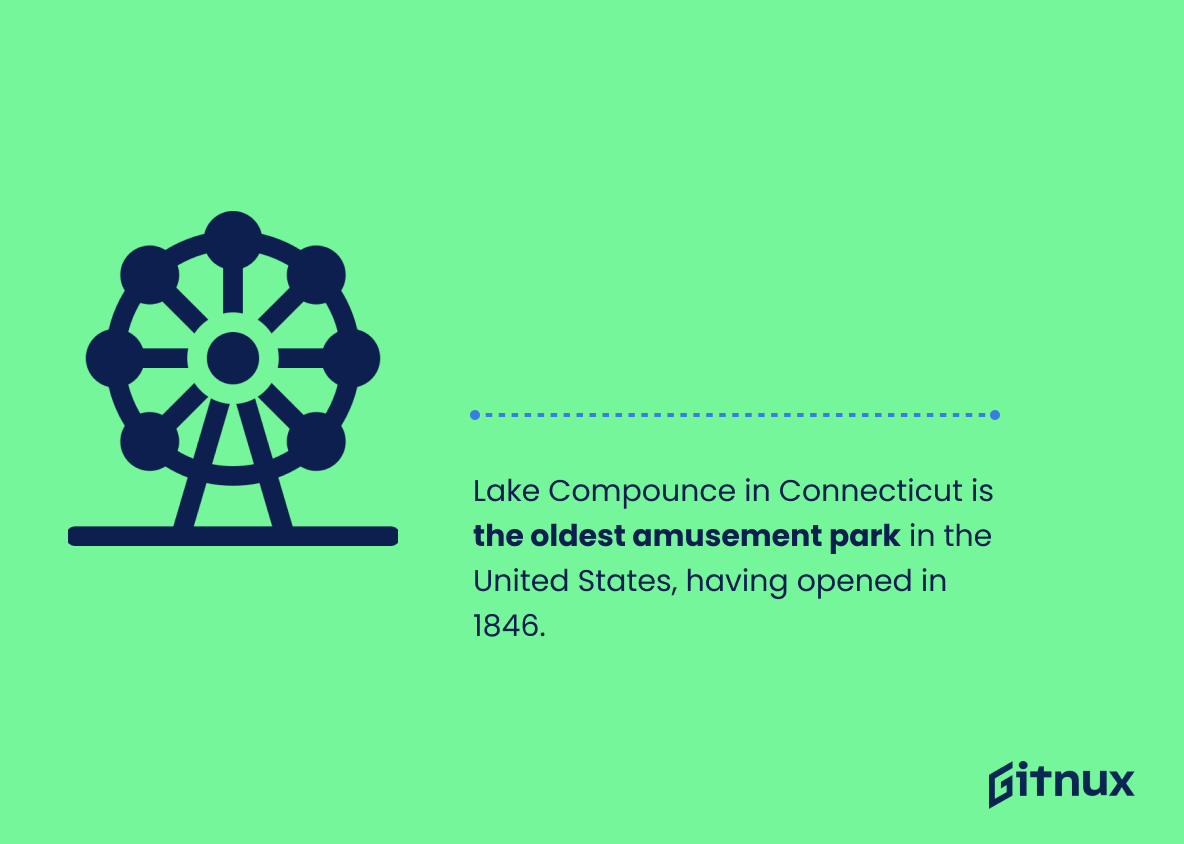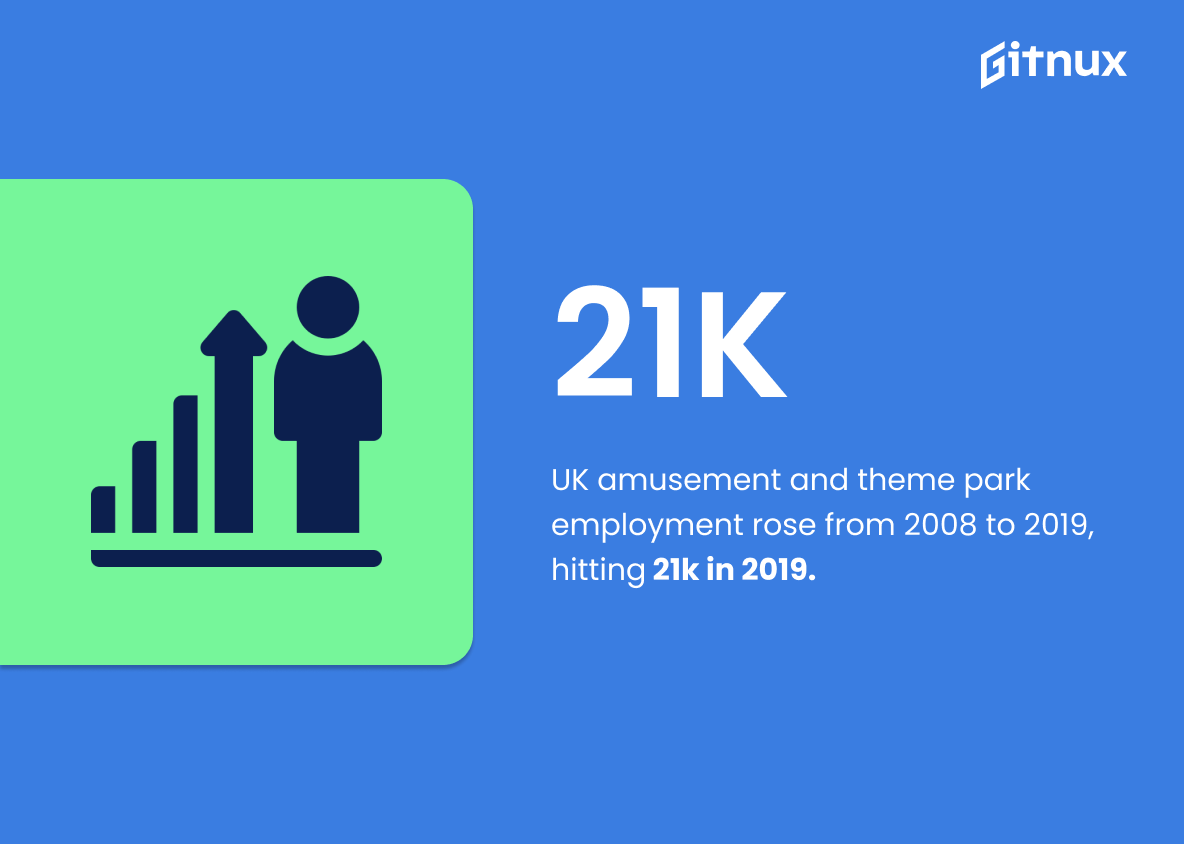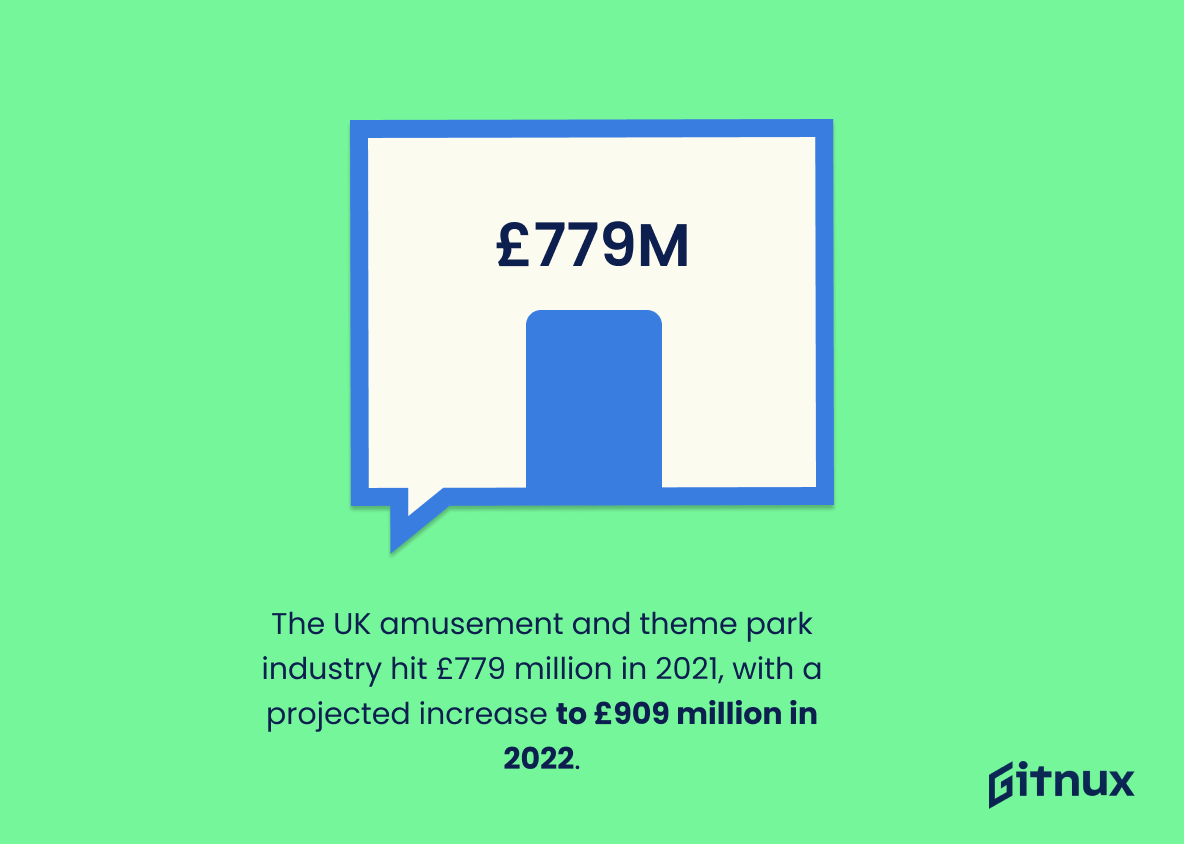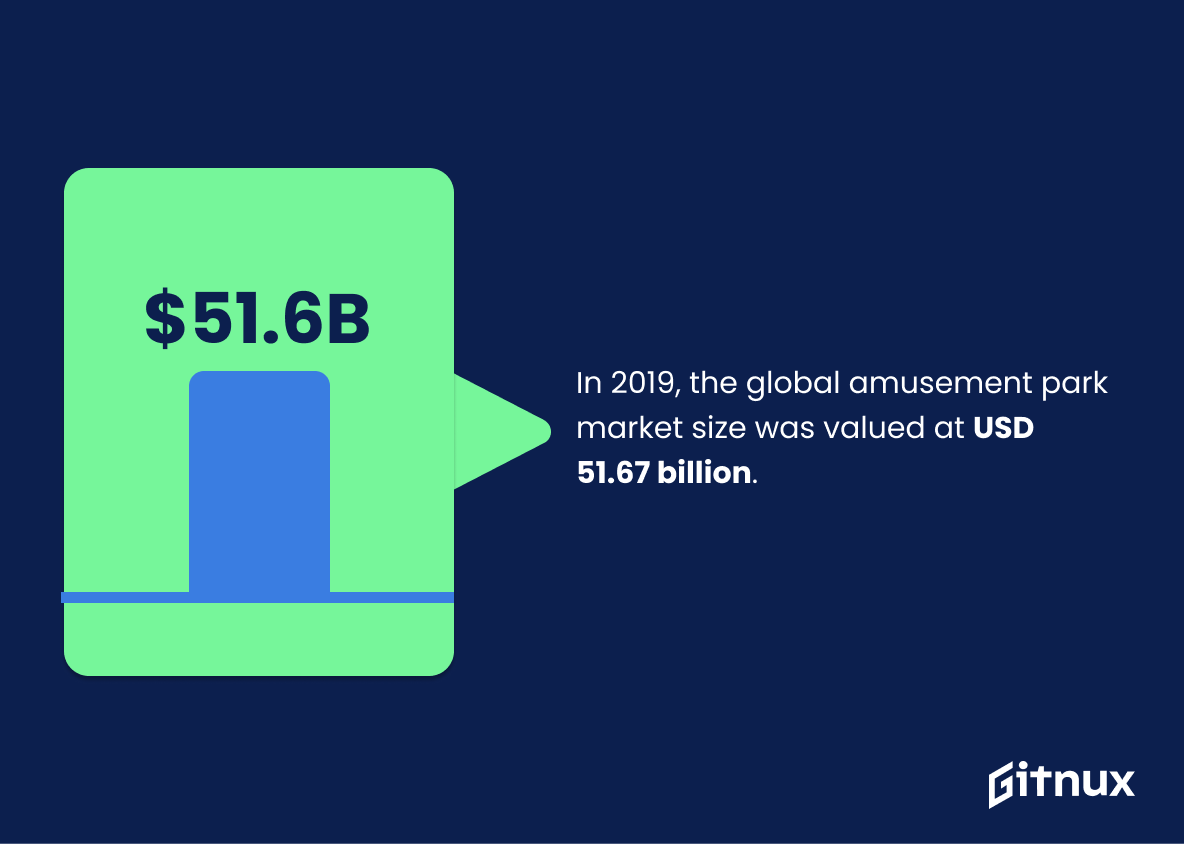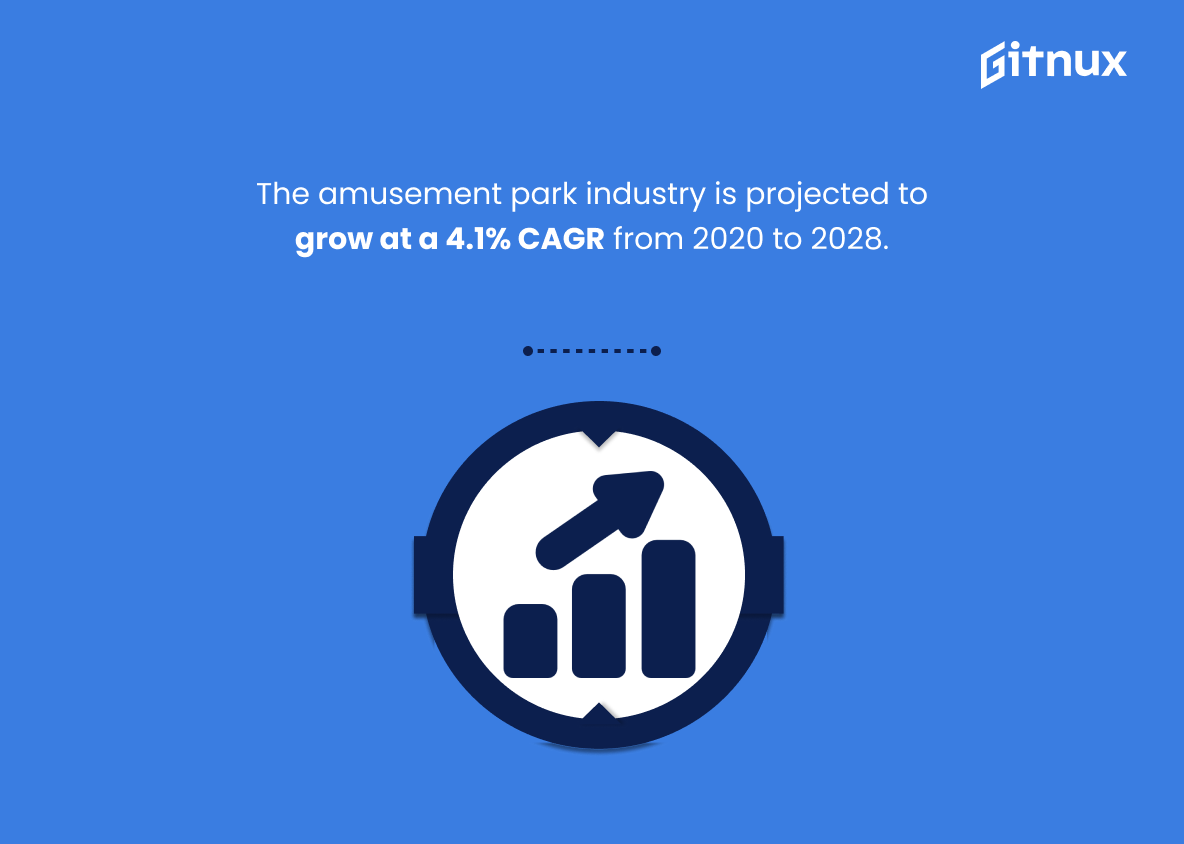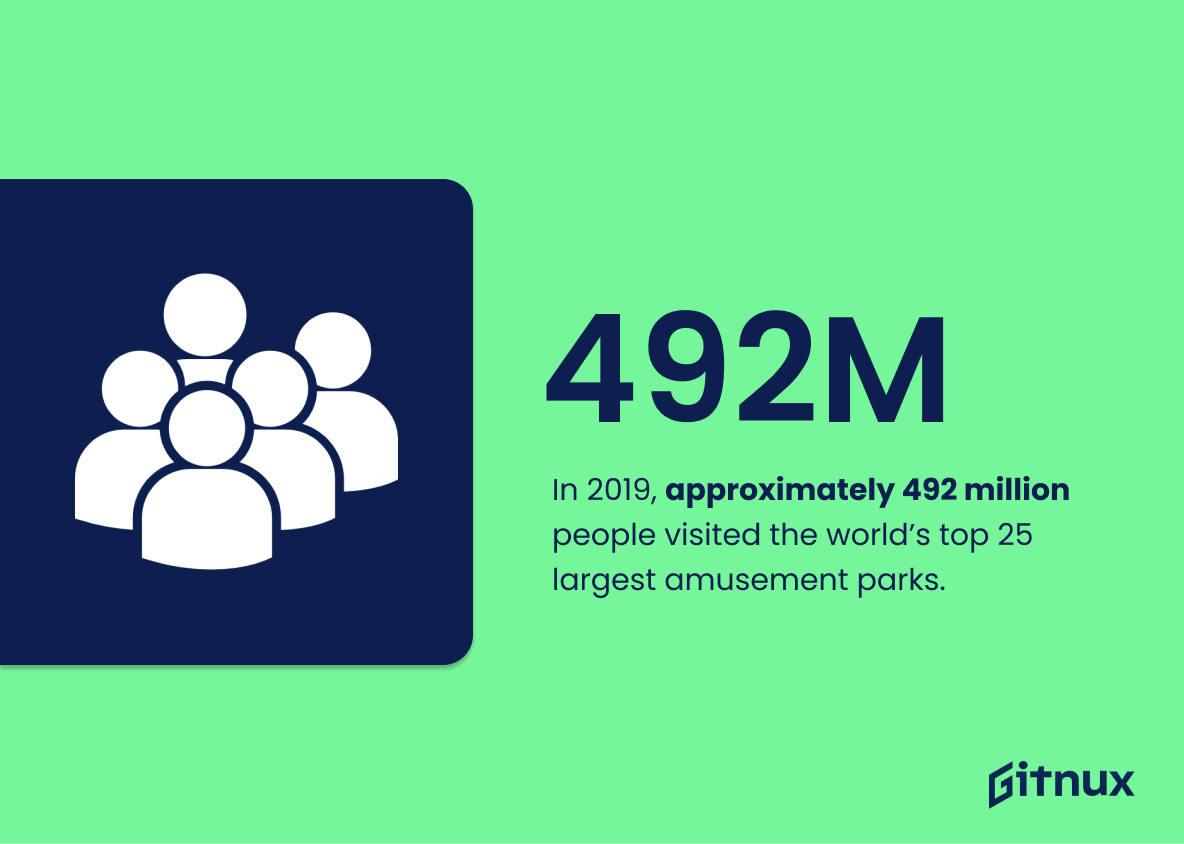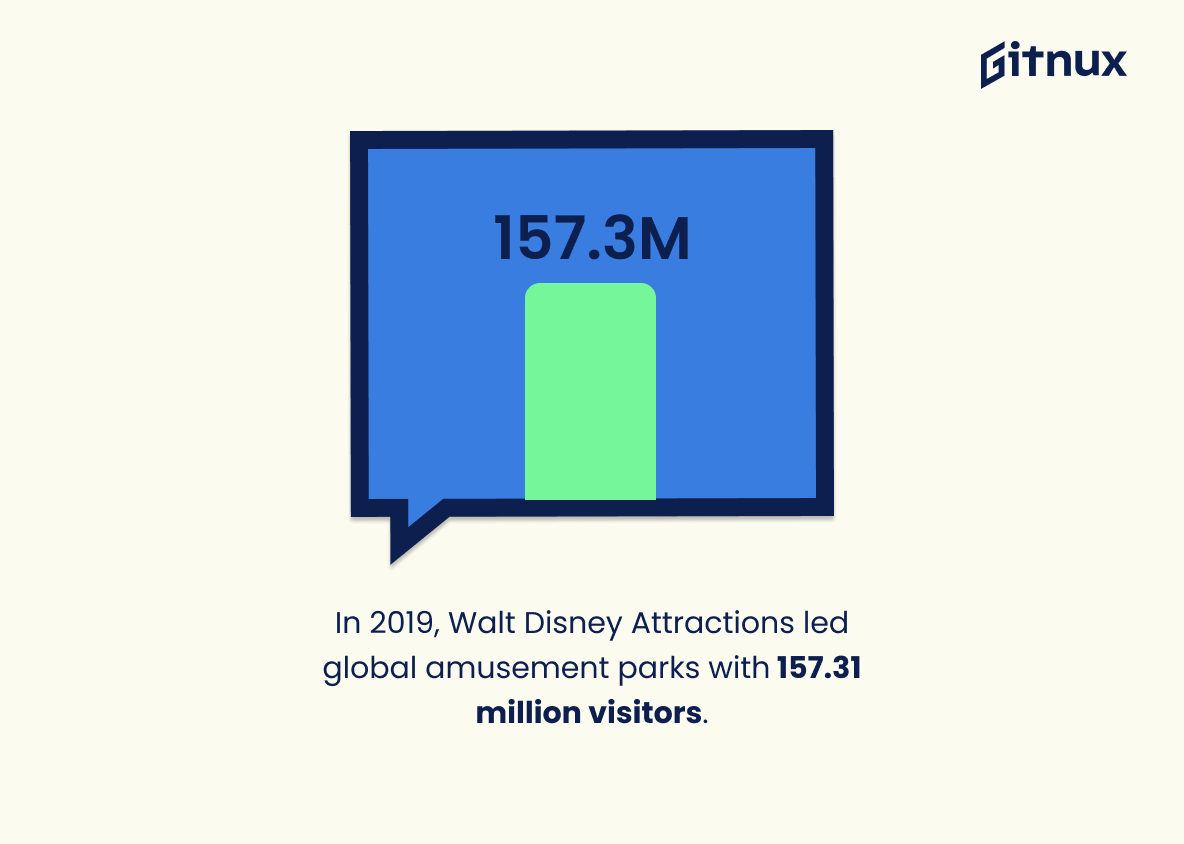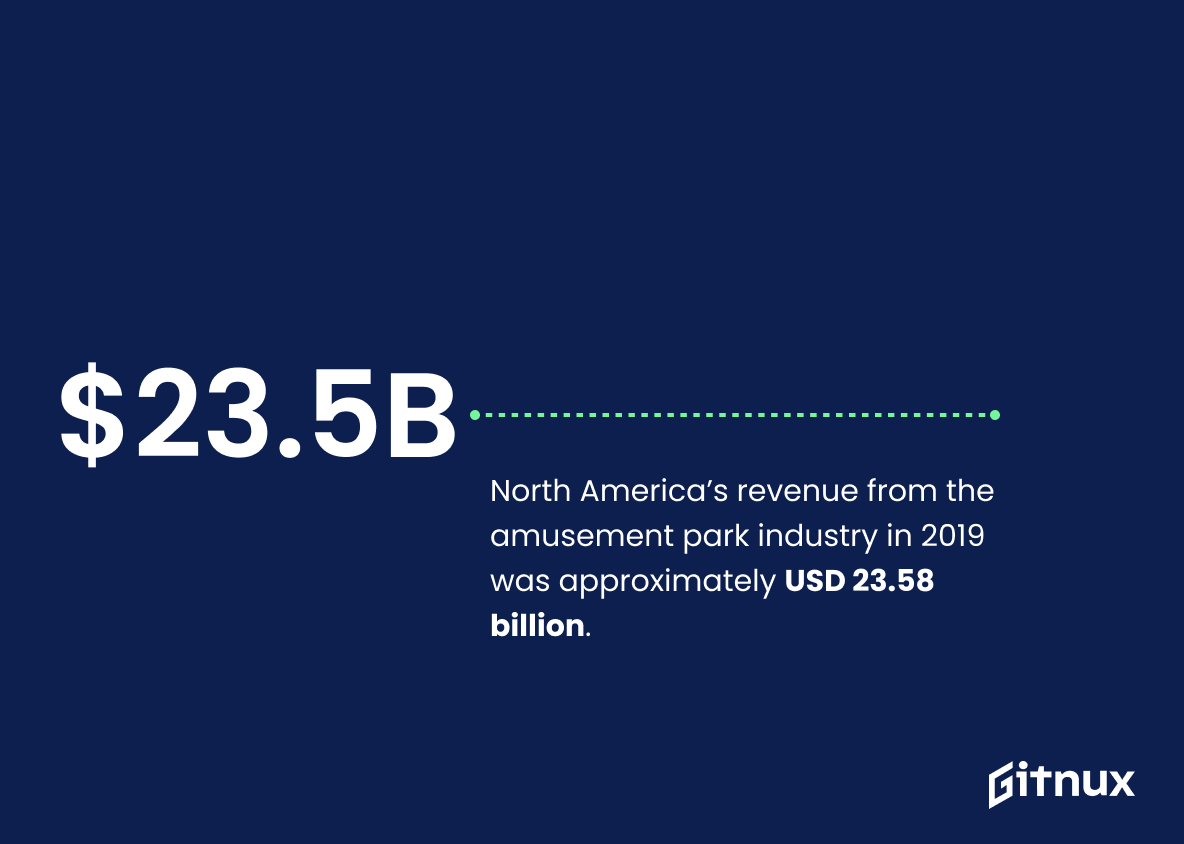Welcome to our blog post about amusement park industry statistics. This post will take a look at the current state of the amusement park industry, with a focus on the United States. We’ll look at the size of the industry, the number of parks, the types of attractions, and the economic impact of amusement parks.
We’ll also explore the trends that are driving the industry and the challenges that amusement parks face. Finally, we’ll discuss the future of the amusement park industry and the potential for growth. So, let’s dive in and take a look at the fascinating world of amusement park industry statistics.
Amusement Park Industry: The Most Important Statistics
Disneyland Park at Disneyland Paris, France was the most visited amusement park in Europe in 2021 despite the COVID-19 pandemic.
The UK amusement and theme park industry was valued at 779 million British pounds in 2021 and is expected to reach 909 million British pounds in 2022.
Amusement Park Industry Statistics Overview
In 2021, Disney Parks and Resorts was the leading amusement or theme park company worldwide in terms of revenue, with OCT Limited coming in second.
This shows the dominance of Disney Parks and Resorts in the amusement park industry. It also displays the potential of the Chinese market, with OCT Limited coming in second in terms of revenue. This highlights the potential for growth in the industry, particularly in the Chinese market.
Universal Parks and Resorts had 51.24 million visitors in 2019, making it one of the most popular amusement park chains in the world.
Bakken in Denmark is the oldest amusement park in the world, having opened in 1583, while Prater in Austria is the second oldest, having opened in 1766. This demonstrates the resilience of the amusement park industry, as these parks have been able to remain popular and profitable for hundreds of years.
Lake Compounce in Connecticut is the oldest amusement park in the United States, having opened in 1846.
In 2019, the Magic Kingdom was visited by over 20 million people, but due to the coronavirus pandemic, attendance dropped dramatically to 12 million in 2021.
This shows the impact of the coronavirus pandemic on the amusement park industry and demonstrates the significant decrease in attendance due to it, which has had a major effect on the industry’s overall revenue.
Disneyland Park at Disneyland Paris, France was the most visited amusement park in Europe in 2021 despite the COVID-19 pandemic.
Therefore, the amusement park industry in Europe is still thriving and that people are still willing to visit amusement parks. It is an encouraging sign for the industry and shows that people are still interested in visiting amusement parks despite the pandemic.
The Amusement Park sector in the United States saw an increase of 55.33 thousand employees in 2022, bringing the total to 268.95 thousand.
Thus, the Amusement Park sector is growing and creating more jobs. This growth could be a sign of a healthy industry, which could lead to more investment and expansion in the sector. Additionally, this growth could also lead to increased wages and better working conditions for employees.
The average employment in amusement park and theme park enterprises in the UK has increased from 2008 to 2019, reaching 21 thousand employees in 2019.
This shows the growth of the industry in the UK over the past 11 years, indicating that the industry is thriving and providing employment opportunities for many people.
The UK amusement and theme park industry was valued at 779 million British pounds in 2021 and is expected to reach 909 million British pounds in 2022.
The growth is indicative of the increasing popularity of amusement parks in the UK, which is a positive sign for the industry as a whole. It also shows the potential for further growth in the future, which could lead to more job opportunities in the sector.
The Amusement Park sector in the United States experienced a 43% increase in market size in 2021, from 8.65 billion U.S. dollars to 12.37 billion U.S. dollars.
This growth indicates that the industry is healthy and that it is likely to continue to be a profitable sector for businesses.
In 2019, the global amusement park market size was valued at USD 51.67 billion.
Amusement parks are a major player in the global economy, and that they are a major source of entertainment and recreation for people around the world. This statistic is a great starting point for anyone looking to gain a better understanding of the amusement park industry and its impact on the global economy.
The amusement park industry is expected to grow at a compound annual growth rate (CAGR) of 4.1% from 2020 to 2028.
The industry is likely to experience a steady increase in size and profitability, making it an attractive investment opportunity for those looking to capitalize on the industry’s potential. Furthermore, this statistic provides a benchmark for amusement park owners and operators to measure their own performance against, allowing them to make informed decisions about their businesses.
In 2019, approximately 492 million people visited the world’s top 25 largest amusement parks.
Despite the ever-changing landscape of entertainment, amusement parks remain a popular destination for people of all ages. This statistic is a clear indication that the amusement park industry is thriving and is a great source of entertainment for millions of people.
In 2019, Walt Disney Attractions was ranked the leading amusement and theme park company worldwide, with 157.31 million visitors.
With 157.31 million visitors in 2019, it is clear that Walt Disney Attractions has been able to capture the attention of a large audience and provide them with an enjoyable experience. This statistic is a great example of the potential of the amusement park industry and serves as an inspiration for other companies in the industry.
North America’s revenue from the amusement park industry in 2019 was approximately USD 23.58 billion.
The industry was able to generate a staggering USD 23.58 billion in revenue, demonstrating its immense popularity and profitability. This statistic is an important indicator of the industry’s growth and success, and is essential for understanding the current state of the amusement park industry.
The United States has over 400 amusement parks and traditional attractions.
This speaks to the immense popularity of these attractions and the economic impact they have on the country. It also highlights the importance of the industry in providing entertainment and leisure activities for people of all ages.
In 2019, Europe’s amusement park industry generated revenues of approximately EUR 5.6 billion.
The industry is thriving and that it is a major contributor to the European economy. This statistic is an important indicator of the industry’s growth and potential, and it is a valuable piece of information for anyone interested in the amusement park industry.
As of 2020, there were 305 roller coasters in operation at amusement parks throughout the United States.
Despite the ever-changing landscape of the amusement park industry, roller coasters remain a staple of the experience. This statistic is a reminder of the timelessness of the roller coaster and its ability to captivate and thrill generations of park-goers.
The roller coaster with the highest drop is Kingda Ka at Six Flags Great Adventure, standing at 418 feet (127 meters).
Kingda Ka’s 418-foot drop is a record-breaking feat that speaks to the innovation and creativity of the amusement park industry. It is a reminder of the industry’s ability to push the boundaries of what is possible and provide an unforgettable experience for its guests.
In 2018, approximately 10.83 million people visited Universal Studios Japan, making it the highest-grossing amusement park in Asia after Disney parks.
This statistic is a testament to the success of Universal Studios Japan, demonstrating its ability to draw in a large number of visitors and become the highest-grossing amusement park in Asia. It is a clear indication of the strength of the amusement park industry in Asia, and serves as a benchmark for other parks in the region to strive for.
In 2020, Disney’s Magic Kingdom was the most visited theme park in the world, hosting 572,000 guests amid the COVID-19 pandemic.
Despite the challenges posed by the pandemic, Disney’s Magic Kingdom was still able to attract a staggering 572,000 guests in 2020, demonstrating the enduring popularity of amusement parks and the strength of the industry.
The number of jobs created by the amusement park industry in the United States, including direct, indirect, and induced impacts, was approximately 1.3 million in 2019.
The industry has created, both directly and indirectly, and the positive effect it has had on the economy. It is a powerful reminder of the importance of the amusement park industry and its contribution to the nation’s workforce.
The total economic impact of the amusement park industry in the United States was around USD 75.6 billion in 2019, including direct, indirect, and induced impacts.
The industry is a major contributor to the US economy, generating billions of dollars in direct, indirect, and induced impacts. This statistic is a valuable insight into the size and scope of the industry, and it is an important piece of information for anyone interested in the amusement park industry.
In 2021, there were around 99 water parks in operation in Europe.
Despite the pandemic, the amusement park industry is still thriving in the region. This is a positive sign for the industry, as it suggests that people are still interested in visiting water parks and other amusement parks in Europe. Furthermore, it could be an indication of potential growth in the industry, as more people may be encouraged to visit water parks in the future.
By 2025, the global amusement park market is predicted to reach USD 70 billion.
The market is expected to grow significantly in the coming years, indicating that there is a great opportunity for businesses to capitalize on this growth. This statistic is a valuable insight into the future of the amusement park industry and can help inform decisions about investments and strategies.
In 2019, the average amount spent per visitor at Disney parks was USD 120, an increase from USD 115 in 2018.
This is an important indicator of the success of the amusement park industry, as it shows that more people are visiting Disney parks and spending more money while they are there. This is a positive sign for the industry as a whole, and it is an important statistic to consider when discussing the amusement park industry.
As of October 2021, Cedar Fair operates 13 amusement parks in the United States and Canada.
This statistic is a testament to the success of the amusement park industry, as Cedar Fair has been able to expand its operations to 13 parks across the United States and Canada. It is a clear indication that the industry is thriving and that people are still interested in visiting amusement parks. This statistic is a great example of the growth and success of the amusement park industry.
Conclusion
The amusement park industry is a multi-billion dollar industry that continues to grow each year. With the increasing number of people visiting amusement parks, the industry is expected to continue to grow in the coming years.
The industry is also becoming increasingly competitive, with new parks and attractions popping up all over the world. As the industry continues to expand, it is important to stay up to date on the latest industry statistics. By doing so, amusement park owners and operators can make informed decisions about their business and ensure that their park remains a top destination for visitors.
References
1 – https://www.statista.com/statistics/258810/theme-und-amusement-park-companies-ranked-by-revenue/
2 – https://www.statista.com/statistics/194323/attendance-figures-of-amusement-park-chains-worldwide/
3 – https://www.statista.com/statistics/1368635/oldest-amusement-parks-worldwide/
4 – https://www.statista.com/statistics/1358559/oldest-amusement-parks-us/
5 – https://www.statista.com/statistics/194247/worldwide-attendance-at-theme-and-amusement-parks/
6 – https://www.statista.com/statistics/1308749/video-conferencing-systems-by-projects-russia/
7 – https://www.statista.com/statistics/1180308/number-of-amusement-park-industry-employees-us/
8 – https://www.statista.com/statistics/655004/amusement-and-theme-park-activities-employment-uk-united-kingdom/
9 – https://www.statista.com/statistics/1291782/amusement-theme-parks-industry-market-size-uk/
10 – https://www.statista.com/statistics/1174515/amusement-park-industry-market-size-us/
11 – https://www.cedarfair.com
12 – https://www.statista.com
13 – https://www.europarl.europa.eu
14 – https://www.teaconnect.org
15 – https://www.ibisworld.com
16 – https://www.grandviewresearch.com
17 – https://www.ewa.info
18 – https://www.marketwatch.com
19 – https://www.guinnessworldrecords.com
20 – https://www.iaapa.org
21 – https://www.theparkdb.com
